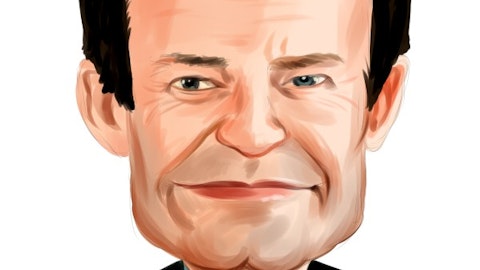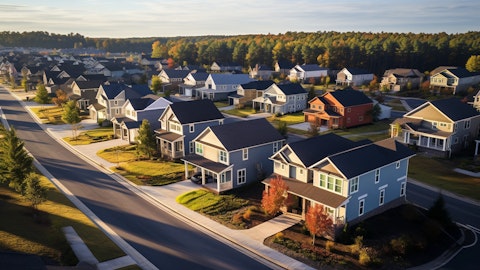Rob McGibney: Sure. Yeah. It’s really been kind of spotty on what’s moving up and down in regards to materials. I mean, there’s some that we’ve been able to lower our costs last year and it’s stuck and others where it’s continued to go up, concrete’s one that comes to mind. There’s a lot of infrastructure projects going on in most of the cities that we operate in. So concrete is one that’s inflated pretty quickly and seems almost programmatic with some of the numbers that we’re seeing. As far as the development goes, we’re working from a really favorable cost basis in our land and we’re well positioned to sustain solid gross margins given we’ve got that land cost basis favorability. But the cost to develop those lots, those assets, has gone up and I think the most significant are the contract and labor costs.
I mentioned the infrastructure work that’s driving part of that and then just growth and overall construction for home building too. But with respect to development, kind of a little bit easier to measure because we don’t have as many parts and pieces going into it. But depending on the division we’re seeing anywhere from low-to-mid double-digit range to, in some cases, a little bit higher. Actually, I’m sorry, low to mid-single digits to low-double digits is what we’re seeing. And as we’re looking at these lots and communities that we’re developing, it’s really inflation that we’re going to experience in our closing as we get out into 2025. These are lots that we’re developing today. They’re not going to be delivered in 2024.
Rafe Jadrosich: That’s really helpful. Just remind us how much of the development cost is that as a percentage of the total land cost typically?
Jeff Mezger: Yeah. It varies tremendously by division and by land parcel. So, the average, like, I’d have to reference it, but I don’t know that it’s that meaningful just because of the variances that we see across the business.
Rafe Jadrosich: Okay.
Operator: And our final question comes from the line of Jay McCanless with Wedbush Securities. Please proceed with your question.
Jay McCanless: Hey. Good afternoon. So the first question I had, maybe sticking on the land topic for a second, as you’re looking at lots for 2026 and beyond, what are you seeing in terms of land cost inflation for those further out lots? And from a competitive standpoint, we’ve heard from some of your competitors that the land market, especially this spring, is more fierce than it is normally. So maybe if you could talk about the inflation and what the competitive backdrop looks like?
Jeff Mezger: Well, I would describe the land market as competitive. There’s no easy deal out there. It’s not just who are you competing with for the best price for the parcel. It’s what’s the complexity of the improvements and the development. You really need to understand the parcel and if you have a good land team, it’s a strength. If you don’t have a good land team, it can be a weakness. And overall, while it’s competitive, we are finding deals, we spent 60% more in Q1 on land development than we did a year ago. So it tells you that we’re finding deals and we’re investing in input. I also said in my prepared remarks that we’re sticking to our disciplines on the underwriting, the location, the product type and the returns that we need to get. So Rob, I don’t know if you have any other color you want to give on what you’re seeing out there on the land market.
Rob McGibney: Well, I’d just echo your comments. I mean, it is competitive and we are seeing land prices move up, and it depends just based on the submarket, based on the city. It’s hard to give a specific number as far as what lots of — lot costs or land is inflated to and the development is a factor in that, too. I mean, it all goes to the residual that you can pay for the developed lot, but definitely competitive.
Jay McCanless: Okay. Thank you. And then, Jeff K, last quarter you talked about how I think roughly 30% of production in the quarter were spec homes with a goal of being more like 25%. Could you talk about where specs are now and how we should think about that mix in terms of the gross margin guide for the second quarter and for the rest of the year?
Jeff Kaminski: Yeah. On the spec side, it’s remaining relatively stable. When you see, you know, the nice thing that we’re seeing now is with the can rate coming down, we’re not having to resell lay homes after a start that we had at a point in time just a few years back. So that spec mix I think is going to remain fairly stable as we move through it. When we just look at what we have in production, it’s roughly where we’ve been delivering right around 30% of the total is the production right now of spec homes. And, yeah, I think, that will remain pretty close to those levels. That is the tricky part, as you point out, about forecasting gross margin, but it’s easier when it’s a fairly stable number, and particularly, with the lower can rate where you’re not having as many surprise spec homes as versus planned ones. So, we’re steady as she goes in that metric as we move forward…





